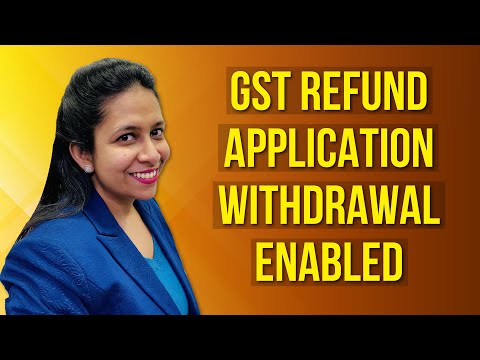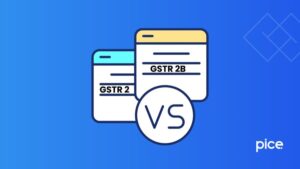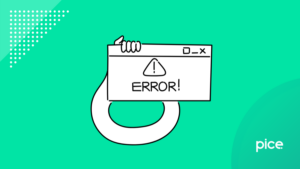How to Cancel a GST Refund Application: A Comprehensive Guide
- 29 Aug 24
- 6 mins
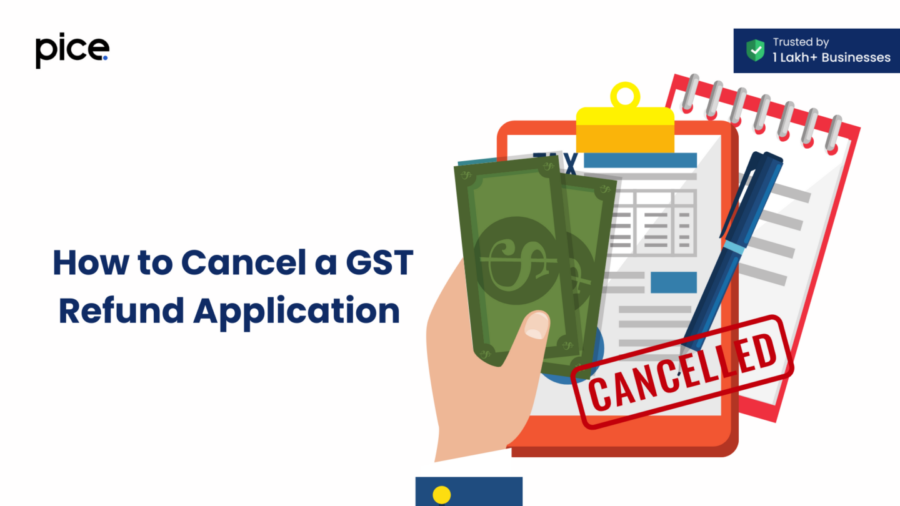
How to Cancel a GST Refund Application: A Comprehensive Guide
Key Takeaways
- Ensure Compliance: Follow all GST rules and regulations to avoid legal and financial issues when canceling a refund application.
- Document Thoroughly: Maintain detailed records and provide all necessary supporting documents to substantiate the reasons for cancellation.
- Communicate Clearly: Inform all relevant internal departments about the cancellation to ensure cohesive handling and adjustment of financial records.
- Monitor the Process: Keep track of the refund application status and await official confirmation from tax authorities to ensure proper cancellation.
- Seek Professional Advice: Consult with tax professionals for guidance on complex issues and to ensure all aspects of the cancellation are properly managed.
Canceling a GST refund application might be necessary for various reasons, such as errors in the application, changes in the business scenario, or a reevaluation of refund eligibility. Understanding the correct procedure for cancellation ensures compliance with GST rules and the smooth handling of financial records.
This guide provides step-by-step instructions to help you navigate the process of canceling a GST refund application efficiently and accurately.
Reasons for Canceling a GST Refund Application
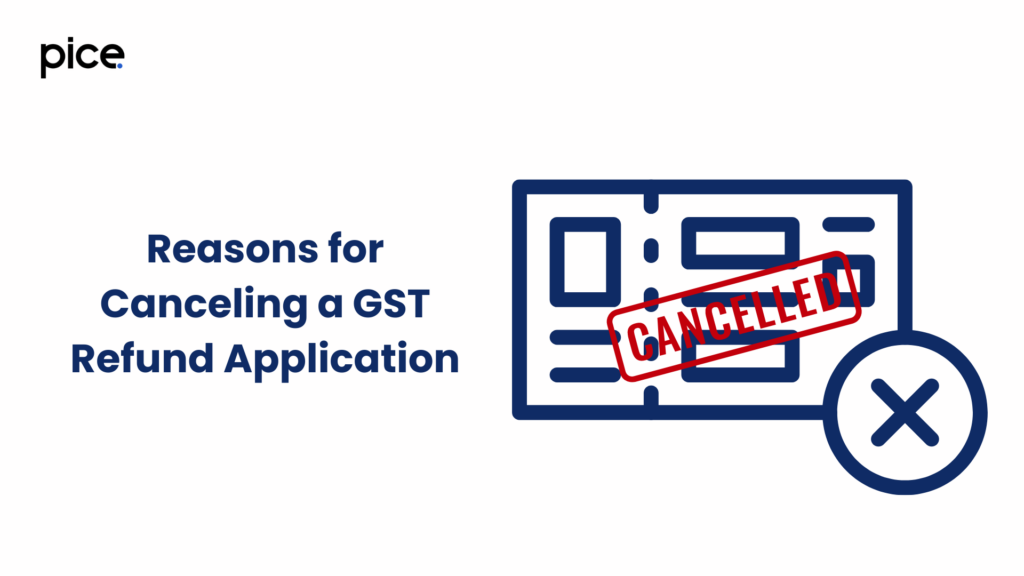
- Change in Eligibility
If your business circumstances change, making you ineligible for a refund, it is crucial to cancel the GST refund application. This can occur due to changes in business operations, turnover thresholds, or other criteria that affect your eligibility for GST refunds.
- Errors in Application
Mistakes or inaccuracies in the initial refund application, such as incorrect figures, missing information, or computational errors, necessitate cancellation. Correcting these errors ensures compliance with GST rules and prevents future complications.
- Overstated Refund Amount
If the refund amount claimed is higher than the actual eligible amount, canceling the application allows you to rectify the claim. Overstating the refund can lead to legal and financial repercussions, making it essential to address any discrepancies promptly.
- Delay in Processing
Long delays in the refund process might prompt a reassessment of the application. If the refund is not processed within the expected timeframe, canceling and reapplying may expedite the process or align better with current business needs.
- Business Restructuring
Organizational changes, such as mergers, acquisitions, or restructuring, can affect the eligibility or need for the refund. Canceling the GST refund application allows the business to reassess its financial position and align with new strategic directions.
- Voluntary Decision
A strategic decision to withdraw the refund claim can be made based on business priorities, financial strategies, or changes in cash flow requirements. Voluntary cancellation helps in managing funds and resources more effectively.
- Reassessment of Financial Needs
Changes in financial strategy or needs may lead to the cancellation of the refund application. Reevaluating the necessity of the refund in light of current financial circumstances ensures optimal financial management.
- Regulatory Changes
New regulations affecting the refund eligibility or process may require cancellation. Staying updated with regulatory changes and adjusting refund claims accordingly ensures compliance and avoids potential penalties.
- Audit or Compliance Concerns
Issues identified during audits or compliance reviews can necessitate the cancellation of the refund application. Addressing audit concerns and ensuring compliance with GST regulations are critical for maintaining a clean financial record.
Step-by-Step Guide to Cancel a GST Refund Application
- Review Eligibility Criteria
Ensure that the cancellation is in compliance with GST rules and regulations, considering the criteria for refunds and the types of refunds applicable.
- Identify Reasons for Cancellation
Document the specific reasons for the cancellation to provide a clear rationale, such as excess payment, invoice refund, or reevaluation of refund eligibility.
- Contact Tax Authorities
Reach out to your local GST office or the GSTN portal to initiate the cancellation process. Use the official online portal for efficient processing.
- Provide Supporting Documentation
Submit all necessary documents supporting your reasons for cancellation, including a cancellation letter and any relevant tax payment records.
- Follow Official Procedures
Adhere to the prescribed procedures and guidelines for cancellation. Ensure all steps in the completion of the cancellation process are followed meticulously.
- Await Confirmation
Wait for an official confirmation from the tax authorities acknowledging the cancellation. Monitor refund status (if applicable) to ensure the cancellation is processed correctly.
- Update Internal Records
Ensure all internal financial and tax records reflect the cancellation of the refund application. This includes updating records related to the refund of tax paid and any associated GST liability.
- Communicate Internally
Inform relevant departments within your organization about the cancellation. Make sure the finance and accounting teams are aware of the refund reversal and any adjustments to the payment plan.
- Monitor Refund Status (if applicable)
Keep track of the refund application status to ensure the cancellation is processed correctly. If necessary, apply for a fresh refund application or a provisional refund.
- Seek Professional Advice (if needed)
Consult with a tax professional or advisor to ensure all aspects of the cancellation are properly handled. They can assist with complex issues such as output liability, future GST liabilities, and supplier claim refunds
Considerations When Canceling GST Refund
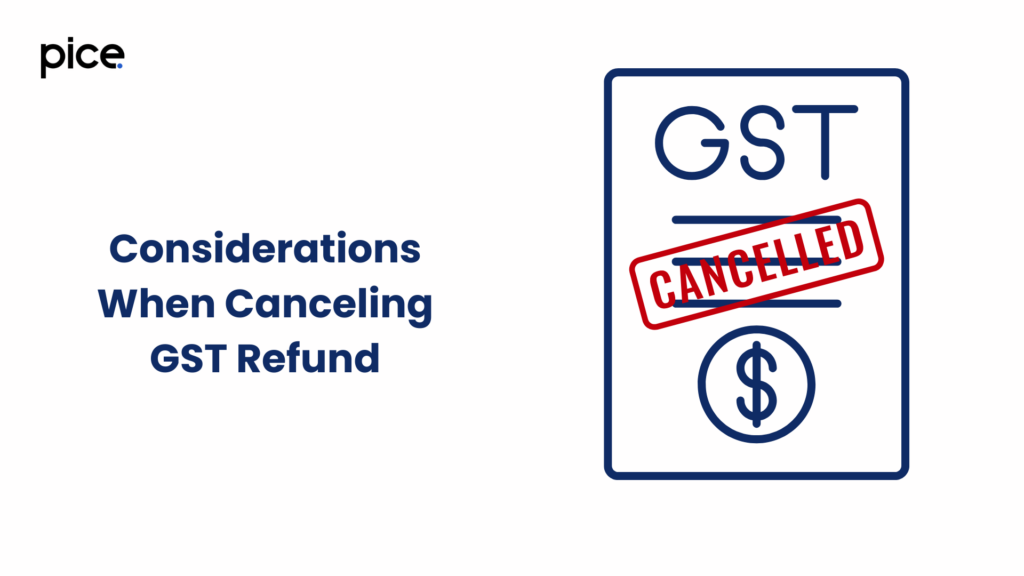
- Impact on Cash Flow: Assess how canceling the refund might affect your business’s cash flow.
- Compliance: Ensure that the cancellation is compliant with all GST regulations to avoid future issues.
- Documentation: Maintain thorough documentation for audit and compliance purposes.
- Professional Guidance: Consider consulting with GST experts to navigate complex scenarios.
Conclusion
Canceling a GST refund application requires careful consideration of various factors and adherence to official procedures. By following this guide, you can ensure that the process is handled efficiently and in compliance with GST regulations.
💡 If you want to pay your GST with Credit Card, then download Pice Business Payment App. Pice is the one stop app for paying all your business expenses.







